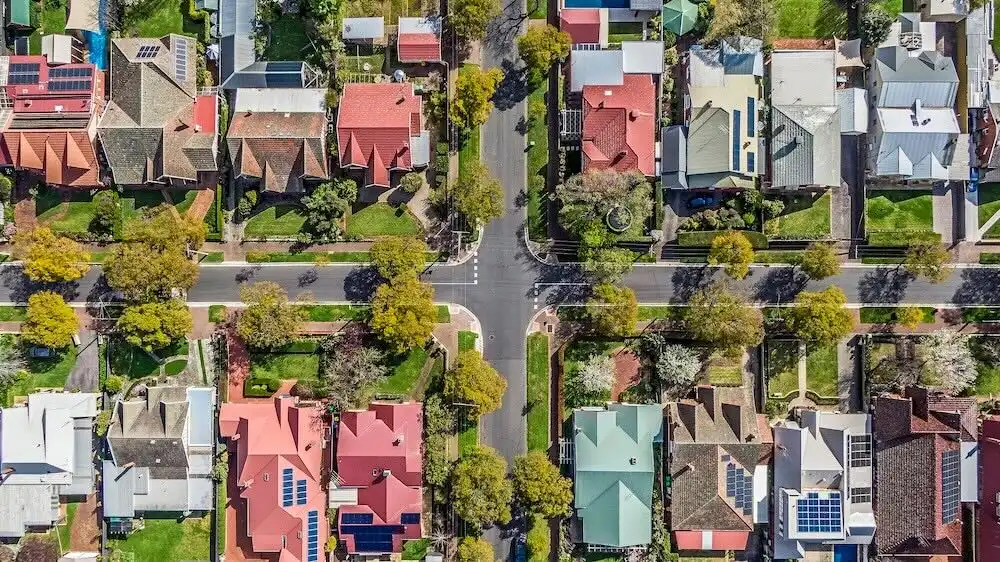Australia's stunning property growth since the pandemic
It's easy to get caught up in the property market's short-term movements as prices rise and dip from month to month, but property is ultimately a long-term game.
Zooming out to look at the past four years alone shows extraordinary levels of price growth across the country, bringing gains of +60 per cent and beyond.
Find out just how much Australian property has soared since the onset of the pandemic.

Get a free property value estimate
Find out how much your property is worth in today’s market.
National home values are up 40% since 2020
Some recent data analysis from PropTrack shows the sheer magnitude of the uplift in property values since March 2020.
On the national level, home prices rose +39.9 per cent over four years, bringing Australia's median property price up to $768,000.

Regional markets outpaced capital cities in that time thanks to a widespread flight to spacious lifestyle areas during periods of lockdown, boosting regional values by +53.6 per cent.
Regional Queensland and South Australia topped the growth charts with upwards of +66 per cent growth as buyers saw value in more affordable markets that presented strong lifestyle opportunities.
Looking to the capitals, Adelaide and Brisbane haven't been far behind their regional counterparts, both gaining more than +63 per cent over the four-year period, while Perth's latest boom has pushed growth beyond +57 per cent.
Australia's two largest cities, Sydney and Melbourne, have seen slower rates of growth, but it's all relative. Gains of +34.7 per cent and +17.2 per cent apiece still represent major increases to the cities' median property prices since the pandemic began.
Four-year growth peaks at above 80%
Zooming in a bit closer, many areas around the country delivered growth far in excess of the national +40 per cent baseline, and in one case, more than doubled that figure.

Wide Bay, which sits north of the Sunshine Coast in Queensland, saw phenomenal gains of +80.5 per cent since March 2020.
Brisbane's satellite city of Ipswich came in close behind at +79.7 per cent with the nearby Gold Coast and Logan delivering over +74 per cent each.
Down in South Australia, Adelaide's North has become a major hotspot, growing +77.6 per cent in just four years, with the city's South also climbing +69.1 per cent.
Dollar-wise, the most expensive region in the top 10 list was the Sunshine Coast, where a mighty +67.8 per cent bump has brought the median price up to $963,000.
Affordability has played a big part in recent price surges
The runaway performance of Australia's mid-sized cities like Perth, Adelaide and Brisbane over the past year can be partly attributed to their relative affordability.
"Housing affordability has worsened, driven by higher mortgage rates and fast growth in home prices, hitting its worst level in at least three decades," PropTrack senior economist Eleanor Creagh explained.
"At the same time, the deposit hurdle — the most significant hurdle in accessing home ownership — has also increased with rapid price growth, and the time it takes new buyers to save a deposit remains incredibly challenging."
With interest rates reaching their highest level since 2011 and cost of living pressures putting the squeeze on people around the country, cheaper options have become appealing for many.
Units are outperforming houses so far in 2024, and that's a trend that could continue for the remainder of the year as buyers seek out value.
"Strong demand for inner-city living post-pandemic, coupled with the rapid rate of population growth and housing supply constraints alongside the relative value units offer are likely buoying buyer demand and pricing in the apartment market," Creagh said.
But there are widespread upsides for sellers after the past four years of explosive growth, regardless of their property type.
"Existing homeowners are benefitting from years of growth, accumulating equity gains on their homes. This has insulated them from the higher interest rate environment with many using equity gains to upgrade."
Thinking of selling in 2024?
If you're still looking to get in on the action this year, it's important to be as prepared as possible in order to cut through the competition and achieve a standout result.
Step 1: Understanding how your market is performing
Every market is different, and understanding your local market is fundamental to making the right selling decisions. Our guide to tracking market trends and data will help you to get a clear picture of how your market is performing and how that impacts you as a seller.
Step 2: Know what your property might be worth
Getting a free home value estimate is a great way to set a foundation for your selling expectations and begin planning the path forward.
Step 3: Get a no-obligation market appraisal from a top real estate agent
Understand what your property could sell for in the current market by speaking to the top-performing agents in your suburb. Comparing top agents in your area will help you find the perfect partner for your selling journey and move towards a successful result.
Step 4: Finally, get your property listing-ready
Taking a thorough approach to preparing your home for sale is another critical step. From cleaning, decluttering, painting and performing other cosmetic renovations to home staging, photography and marketing, getting your property to sale-ready condition is a must.






